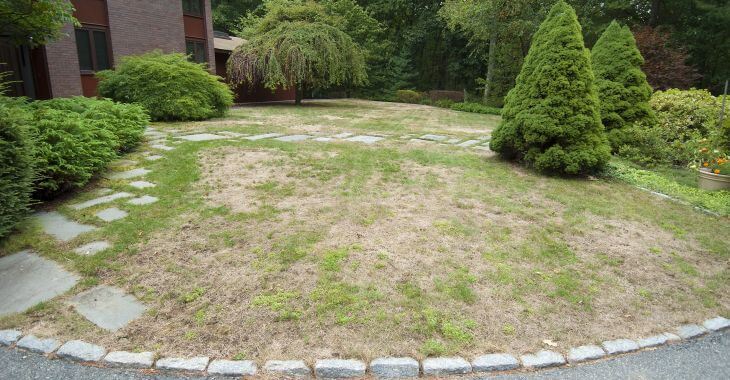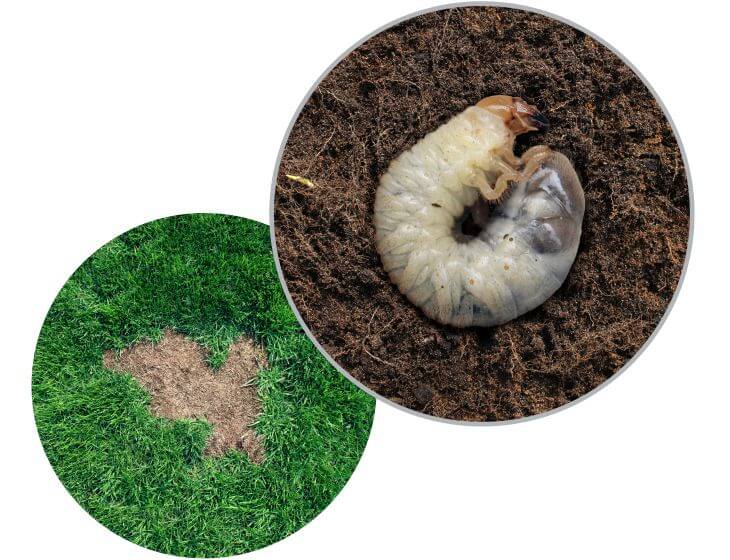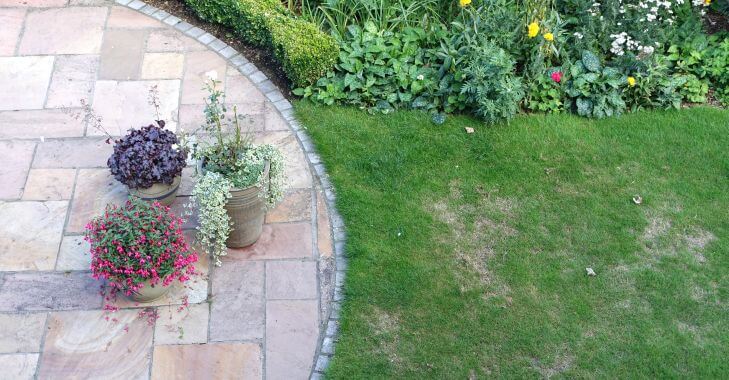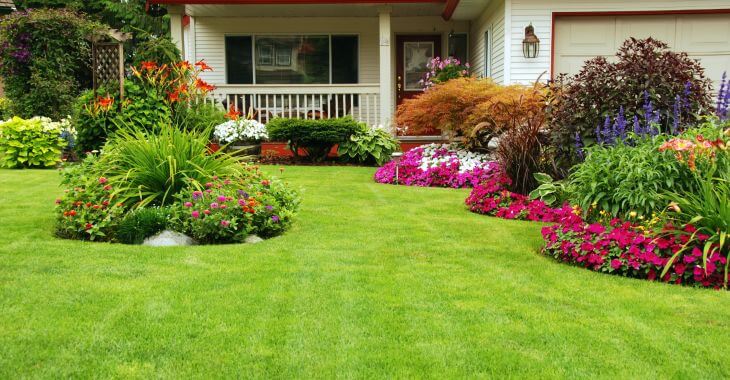What Are Grubs? Revealing the Subterranean World Beneath Your Lawn

If you have ever tended to your lawn and stumbled upon unearthed patches of grass or noticed brown, wilted areas seemingly overnight, chances are you have encountered the clandestine culprits known as grubs. What are grubs, and how do you know if they are on your lawn? Let’s find out.
Understanding the enigmatic world of grubs is essential for maintaining lush and healthy turf in lawn care and gardening. In this article, we will unravel the mysteries of these subterranean creatures, shedding light on what grubs are, what damage they can cause to lawns, and their lifecycle.
What Are Grubs in Lawn?
Grubs, also known as white grubs, are the larval stage of various beetle species, including Japanese beetles, June beetles, and European chafer beetles, among others. These C-shaped larvae reside beneath the surface of the soil, where they feed voraciously on the roots of grass and other vegetation.
Grubs typically range in size from a few millimeters to over an inch in length, depending on the species and stage of development. Depending on the type of beetle, they may also live in various climates.
Lifecycle of Grubs
Understanding the lifecycle of grubs is crucial for effective management and control. Beetles lay their eggs in the soil during the spring and summer months, with larvae hatching shortly thereafter. The newly emerged grubs immediately begin feeding on organic matter, including grass roots.
The feeding of the larvae on grass roots and other organic material in the lawn continues as they grow and develop. Over time, grubs molt and progress through several stages before pupating and eventually emerging as adult beetles.
What Does Grub Damage Look Like
Grub damage to lawns manifests in various ways, depending on the severity of the infestation and environmental conditions. Common signs of grub damage include:
- Brown Patches: Areas of grass that appear brown, wilted, or dead may indicate grub-feeding activity beneath the surface. As grubs consume the roots of grass plants, they disrupt the plant’s ability to uptake water and nutrients, resulting in localized turf decline.
- Thin or Sparse Turf: Grass weakened by grub feeding may become thin or sparse, with reduced vigor and density. Infested areas may exhibit a spongy or soft texture when walked upon, indicating root damage and soil disruption caused by grubs.
- Unexplained Wilting: Despite adequate watering and maintenance, portions of the lawn may exhibit unexplained wilting or decline. This can be a telltale sign of grub infestation, as the roots of affected grass plants are unable to support healthy growth due to feeding damage.
In severe cases of grub infestation, homeowners may discover grubs themselves while inspecting the soil beneath the turf. These creamy-white larvae with distinctive C-shaped bodies are often found near the soil surface, particularly in areas showing signs of turf damage.
Management and Control of Grubs
Effective management and control of grubs require a multifaceted approach that combines cultural practices, biological controls, and targeted treatments. Some strategies for managing grubs in lawns include:
- Maintaining Healthy Turf: A healthy and vigorous lawn is more resilient to grub damage. Practices such as proper mowing, watering, and fertilization can promote strong root growth and minimize the impact of grub feeding.
- Biological Controls: Beneficial nematodes, such as Heterorhabditis bacteriophora and Steinernema feltiae, can be applied to the soil to target and control grub populations. These microscopic organisms parasitize grubs, effectively reducing their numbers over time.
- Chemical Treatments: In cases of severe grub infestation or when cultural and biological controls are insufficient, chemical insecticides may be used to manage grubs. These treatments should be applied according to label instructions and in conjunction with integrated pest management practices to minimize environmental impact.
Regular monitoring and inspection of the lawn can help detect early signs of grub infestation and prevent widespread damage. During routine lawn maintenance activities, look for indicators such as brown patches, thin turf and the presence of grubs.
Do Grubs Die in the Winter?
One common misconception about grubs is that they die off during the winter months. While it is true that grubs are less active and may move deeper into the soil over the winter, they are still present and can survive cold temperatures by entering a state of dormancy.
In regions with harsh winters, such as those experiencing freezing temperatures and snow cover, grubs may be less active but can resume feeding and development once temperatures warm in the spring.

Grubs are a common and often troublesome pest in lawns, capable of causing significant damage to grass roots and turf quality. Understanding the lifecycle of grubs, recognizing signs of damage and using effective management strategies are essential for preserving the health and beauty of your lawn.
By staying vigilant and proactive, homeowners can minimize the impact of grubs and maintain lush, thriving turf year-round. If you have signs of grubs and need professional assistance for management, contact a local landscaping company.

